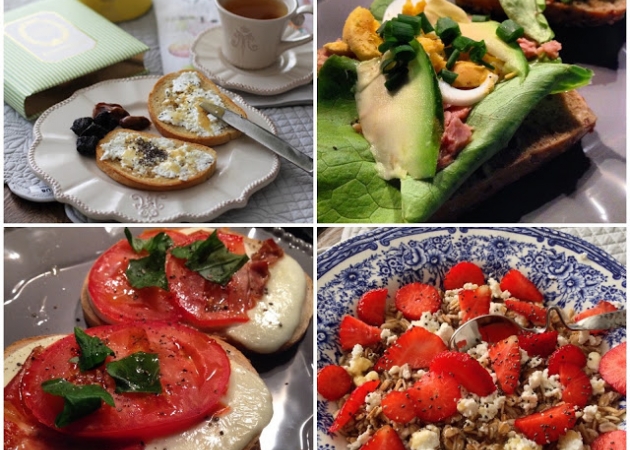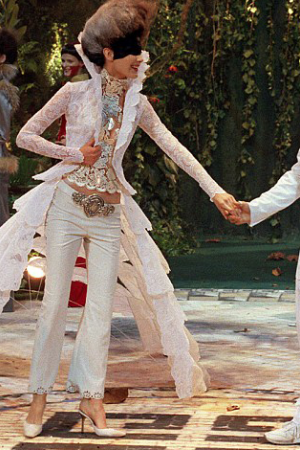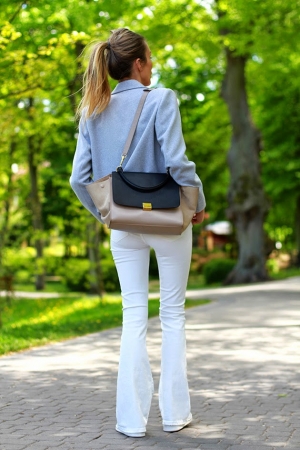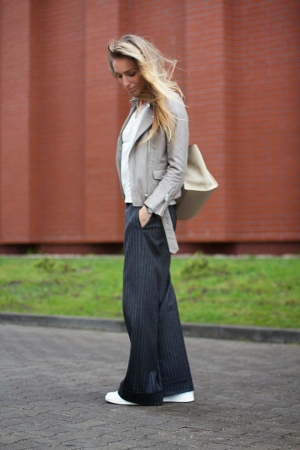Passion 4 Fashion
Aleksander McQueen part 2
Już w 1990 roku, jako dwudziestoletni chłopak, McQueen wiedział, że chce założyć swój własny dom mody. Miał już na swoim koncie doświadczenie na prestiżowej Savile Row i u włoskiego projektanta Gigli, brakowało mu jednak konkretnej wiedzy. Postanowił więc zapisać się na kurs na Central Saint Martins College. Spotkał się z ówczesnym dziekanem studiów magisterskich, Bobby Hillson, a ta, po obejrzeniu jego ubrań i skeczy, natychmiast zaproponowała mu studia magisterskie. McQueen zarabiał na czesne, pracując na pol-etatu u swojego wcześniejszego pracodawcy, McKitterick'a oraz przygotowując kostiumy do musicalu "My Fair Lady". Wiele kostiumow wymagało niezwykłych umiejętności krawieckich, ktore mlody McQueen niewątpliwie posiadał. Podczas studiów zaprzyjaźnił się z kolegą, który pochodził z podobnej robotniczej rodziny, Simonem Ungless i wspolnie jezdzili do Paryża na pokazy Helmuta Langa, Martina Margieli, Azzedine Alaia i Yves Saint Laurent'a. W 1992 roku, McQueen poznał kolegę Unglessa- projektanta biżuterii Shauna Leane, który w późniejszych latach będzie projektował biżuterię na wiele pokazow McQueena. Innym projektantem biżuterii, ktorego dzieła McQueen wykorzystywał (m.in. w swojej kolekcji na zakończenie studiow), byl Simon Costin. Costin wzbudzał wiele kontrowersji, tworzac biżuterię z wykorzystaniem ludzkich włosów, kości, fragmentow zwierząt, zębów, krwi i spermy. Kolekcja Kuba Rozpruwacz, zaprezentowana przez McQueena na zakonczenie studiow, zachwycila widownie swoja "innością". Wiele źródeł podaje, ze cała kolekcja została zakupiona za 5 tys funtow przez Isabelle Blow, jednak trafiłam na przynajmniej jedno źródło, które twierdzi, ze nie bylo to do konca prawda.In 1990, McQueen already knew that he wants to start his own fashion house. He had some invaluable experience but still lacked knowledge, so the next step was to enroll at Central Saint Martins College of Art and Design. McQueen met with Bobby Hillson, who I believe was the dean of master's program at the time, and presented his clothes and sketches. She was extremely impressed with his skills and McQueen got accepted into the master's program. In order to make money to pay for his tuition, McQueen worked part-time for one of his previous employers, McKitterick and at the same time was helping to produce costumes for "My Fair Lady". Some of the costumes were very complicated and required amazing cutting skills, but everything was always done perfectly by the young fashion student. During his studies at Saint Martins, McQueen became friends with another student, Simon Ungless, who had similar upbringing. Both traveled to Paris to watch shows by Helmut Lang, Martin Margiela, Azzedine Alaia and Yves Saint Laurent. In 1992, McQueen was introduced to Ungless's friend, jewelry designer Shaun Leane, who would subsequently design unusual jewelry for many future McQueen's fashion shows. Another jewelry designer, whose pieces McQueen used in his shows, including his 1992 graduation collection, was Simon Costin. Costin created necklaces using animal parts, body fluids, teeth, hair and bones. Costin's "pieces had attracted controversy in the late 1980s when they were made, largely because Costin's Incubus Necklace of 1987 had been impounded by the police and Costin threatened with prosecution. The Necklace incorporated five glass vials of human sperm, each with a Baroque pearl dangling from it, set against a filigree of copper wire with snaky silver sperm entwined over its surface. Surmounted by a little metal plaque that said 'vice and virtue', the piece invoked the dark sensibility of Elizabethan and Jacobean literary imagery, suggesting an attraction of opposites that characterized much of the fashion sensibility of the following decade: vice and virtue, beauty and horror, sex and death." (Caroline Evans).Costin's sensibility was similar to McQueen's. At age 23, McQueen presented his graduation collection, called "Jack the Ripper Stalks his Victims" and it "was based on Jack the Ripper and Victorian prostitutes who sold their hair to be made into locks which were bought by people to give to their lovers: he stitched locks of human hair under blood-red linings. Here, as in so much of McQueen's subsequent work, the themes of sex, death and commerce intertwined. He also encased locks of his own hair in perspex, creating an object which was both souvenir and memento mori; as he conceived it, he was giving himself to the collection". (Caroline Evans). Many sources claim that the entire Jack the Ripper collection was bought for 5,000 pounds by Isabella Blow, however, I have encountered at least one source that claims it was not exactly true.


























